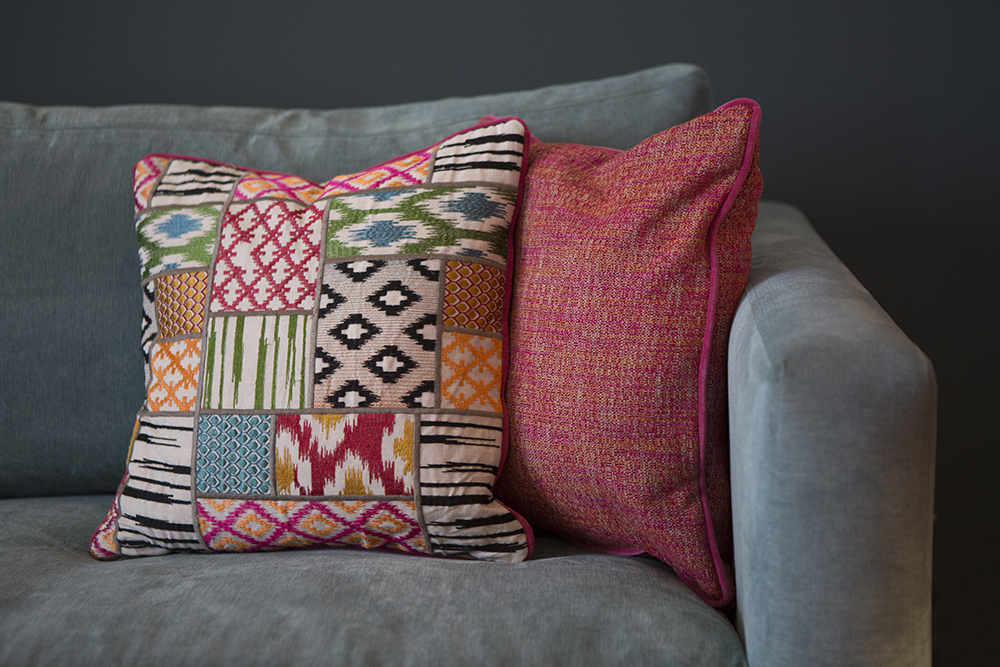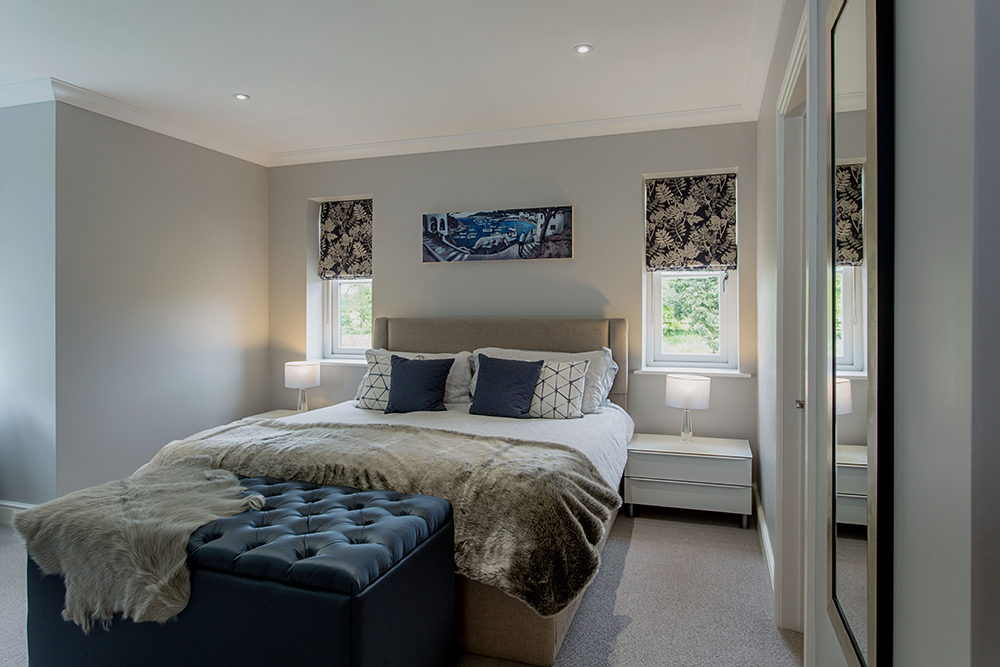MON - FRI: 08:00 - 05:00 PM

How to Create a Stress Free Home
In this week’s blog we’re focusing once more on the psychology of interior design. With all the worries in the world at the moment, it’s important to come home and be able to escape. You need a space of your own that will help you detox and relax.
Here’s how to create a space that’s right for you. I’ve used my ‘Dwellbeing system’ from my book Creating Space to walk you through a few of the 7 spaces you need.
Outer Space – 5 Ways to Make a Welcoming Front Entrance
Your home, be it a small flat or a huge mansion, has got to welcome you in the right way. It needs to be clutter-free, well-lit and have a splash of colour to make you smile.
To do
- Wipe mud splashes away from your door
- Polish your doorknob
- Change the bulb in your porch lantern
- Add a plant pot with something seasonal (and living) in it
- Add storage to the hall/entrance/foyer – keep your shoes out of sight

Me Space – 5 Questions to ask Yourself to find your Interior Design Style
Some people love purple, some hate it. Some people want crocheted plant potholders, others not so much. Some people like chrome and glass, others prefer wood and wool. I personally love the fact that everyone is different, it makes my job far more interesting. When it’s your home though, you must know what you like, what your style is, and what will make you feel like this is my ‘me space’.
The basics:
- What’s your favourite colour?
- Do you like textures?
- Which patterns make you smile?
- Do you like defined angles or softer shapes?
- Do you want luxury or homey?
Once you have gone through these 5 questions create a mood board on Pinterest of each room you want to design….and follow our boards here to get some great interior design inspiration!

Head Space – Interior Design Project Management 101
Like many other desirable lifestyle ‘must-haves’, a lovely home will take time to create, (much like that bikini body will, sadly…) If you’ve got work to do on your home to make it feel and look better, then you need to set some time aside, even if you’re going to hand it over to an interior designer.
Treat your refurbishment (renovation or rebuild) like a project.
- Write a brief of what you want to achieve and who you’ll need to help you achieve it.
- Assign a budget and set a deadline.
- Set up a spreadsheet for costs and timings.
All of this will give you the head space to do the job properly.
Thinking Space – How to Successfully Incorporate the Psychology of Interior Design into Your home
If there’s more than just you in the house, you’ll need to take into consideration the needs and styles of the other members. It’s important to figure out how they ‘think’. We all have very specific ways of thinking and it may surprise you to know your partner doesn’t see the world as you do (of course, you may well be very aware of this!)
- Visual thinkers see the world first, they are observant and tend to enjoy colour and patterns and might appreciate art and architecture more than others.
- Auditory thinkers think with their ears first. They do well at school where we’re told to listen (all the time…). In the home, they will enjoy their music system and have an appreciation of acoustics (and material choices to help them).
- Kinesthetic thinkers are feelers. They enjoy textures and have clear definitions on what is comfortable. Getting the right sofa is really important for them. Adding a furry throw is always a winner. Door handles and banisters will also be key decisions.
- Audio digital thinkers like order. Give them excellent storage, impeccable utility rooms, a spotless garage, an out of bounds (for anyone but them) office and a tie rack or jewellery drawer where order reigns supreme.

For a further look at ‘Design Psychology’ and ‘The Psychology of Interior Design’, we have several other blogs written on this subject, take a look at our latest here.
Dream Space – 5 Key Ingredients for Designing the Perfect Bedroom Retreat
If there’s one space that has to be relaxing, it’s your bedroom.
Here are my top tips:
- Style aside for now, focus on removing the stressors.
- Keep work out of the bedroom, no laptops and ideally no phone (or even TVs).
- Make sure you have storage, and everything can be put away so that when you’re lying in bed, you’re not looking at chaos.
- Choose calm colours – neutrals, greens and blues.
- Consider what lighting you need for all times – when you’re dressing first thing, when you’re chilling out on Sundays, when the bathroom calls in the middle of the night.

Breathing space and heart space are the final two spaces of the ‘dwellbeing system’. You can find out more about them in my book Creating Space available here. Or arrange a consultation and we can walk you through the full system in your own home.
Email: niki@nsid.co.uk
Website: www.nsid.co.uk
Mobile: + 44 (0)7782 256444
Social: @nikischaferinteriordesign
- Category :
- Type :


Comments
Just Say Your Opinion